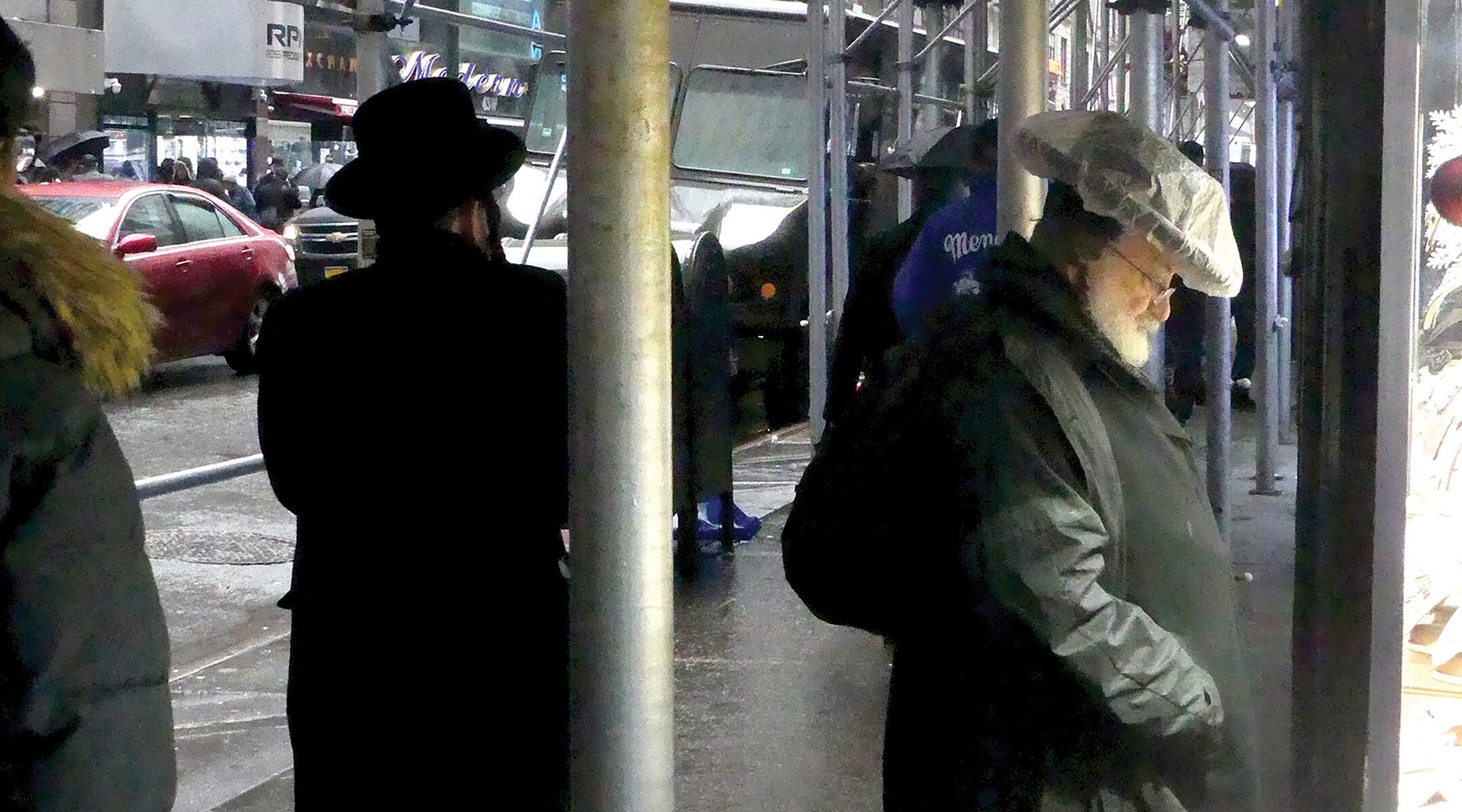In the Diamond District on Monday, a couple of days after “Uncut Gems” set an opening weekend box office record for the indie film company A24, the Orthodox Jews who work in the jewelry business were, well, not studying every facet of the film.
Avi Fertig, executive director of the Diamond District Partnership, said he hasn’t seen the film, which is set along 47th Street and stars Adam Sandler as a wired jeweler with a gambling habit. Friends in the business who saw the film said it showed the typically unglamorous, pressurized work and long hours put in by professional diamond merchants, said Fertig. But the film “was not antagonistic” to the profession.
“Any publicity is good publicity,” said a middle-aged man behind his counter in a building on 47th Street near Sixth Avenue. Like all the workers along the block who spoke to The Jewish Week, he declined to give his name, for reasons of security.
In the comedy-drama crime thriller, which opened in select theaters last Friday and will open for general release on Christmas Day, Sandler plays Howard Ratner, a philandering, cussing, gambling-addicted diamond merchant. In that role, which has shown Sandler’s unexpected serious acting chops and garnered some Oscar buzz, he conducts shady business, makes deals with loan sharks and works with A-list celebrity customers, including retired NBA superstar Kevin Garnett.
The film, which grossed $525,000 (a record $105,000 per screen for A24), is directed by brothers Josh and Benny Safdie.
To prepare for the role of Ratner, Sandler spent some time earlier this year in the warren of stalls and booths on the block of West 47th between Sixth and Seventh avenues that is populated by a disproportionate number of Orthodox Jews, many of them chasidic. He watched them at work and learned some tricks of their trade.
How accurate is the production’s depiction of the closed world of the Diamond District? Mixed reviews, according to the men and women who work there.
In the days just after the premiere, none had seen the film, yet many had watched the crew at work on the street some months ago. And a few who had watched an early screening told a diamond industry executive that, despite the inevitable Hollywood-style exaggerations and dramatizations, it overcame their initial reservations about how their industry would look to outsiders.
Some 33,000 people work in the 3,500 cutting, polishing and sales businesses lining the block.
The Diamond District, which calls itself “the world’s largest shopping district for all sizes and shapes of diamonds and fine jewelry,” traces its roots to the centuries-old diamond trade dominated by chasidic Jews in Belgium and Eastern Europe. It moved to Midtown a century ago from Lower Manhattan, but maintains its Jewish flavor.
The Diamond District — simply “The District” or “The Street” to the folks who work there — is a culture unto itself, its valuables guarded by uniformed police officers on the street, more security personnel inside, discreet cameras recording every move, and many entrances locked until a customer is buzzed in.
Though the percentage of Jews in the business, particularly on the retail side, has dropped over the years (with the second- and third-generation offspring of immigrants moving into other businesses), it still constitutes an estimated majority. The workers bus in from such standard Orthodox venues as upstate Monsey, Lakewood, N.J., and Brooklyn’s Williamsburg neighborhood. They still seal a deal with declarations of “mazel und brucha” (luck and blessing) and participate in the daily Mincha-Maariv prayer services in invitation-only shtiebel worship rooms in many of the buildings.
There are a couple of kosher restaurants on the block, but most of the workers take their meals in their cubicles. The smell of food, heavy on the onions, permeates the air.
At nearly every door stands a hawker, asking bypassers, “buying, selling, shopping?”
The first two floors of the high-rise office buildings are mostly retail, where customers flock to buy an engagement ring or have their late aunt’s broach appraised. Behind thick street-side show windows that display valuable stones and elegant pendants, through doors marked by mezuzahs, a babble of languages — Yiddish, Hebrew, Russian, Mandarin and several tongues from India — can be heard.
On the upper floors, the wholesale trade, which accounts for the bulk of the district’s annual $24.6 billion in sales, is conducted.
In the film, Ratner’s business is retail.
In one Diamond District building, a 30ish man, who called himself “a big fan of Adam Sandler,” said he may watch “Uncut Gems.”
Most of the Orthodox Jews who work there will probably never see Sandler’s final cut.
“It doesn’t sound kosher,” another man in his 30s said of the R-rated film. “I imagine that it’s not a good image.”
Fertig said that “someone going to loan sharks would quickly fall out of the industry.” But overall, he added, “I don’t think people are going to be scandalized.”
If they catch the film, that is.
“We don’t watch TV. We don’t watch movies,” said a woman in her 60s, her hair covered by a large kerchief. Across a small work table in her booth, her husband, with a long white beard and the customary garb of a chasidic Jew, shook his head in agreement. He doesn’t plan to see the film? “Of course not.”
The New York Jewish Week brings you the stories behind the headlines, keeping you connected to Jewish life in New York. Help sustain the reporting you trust by donating today.





